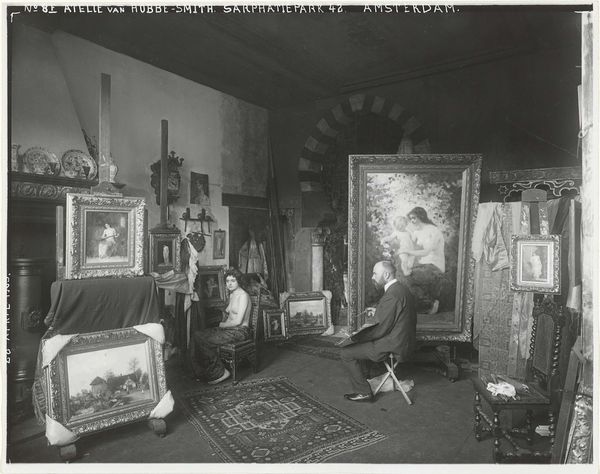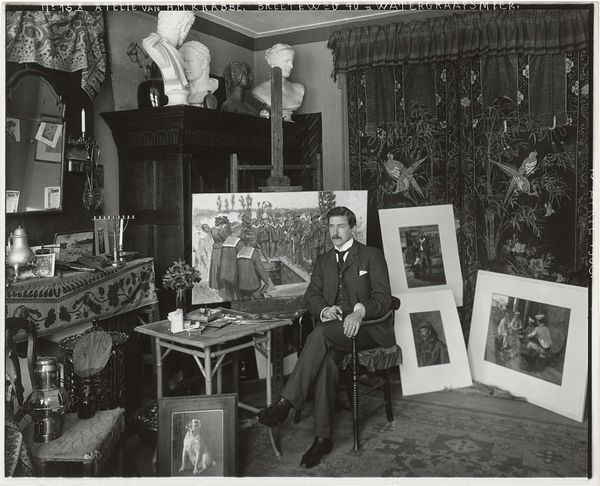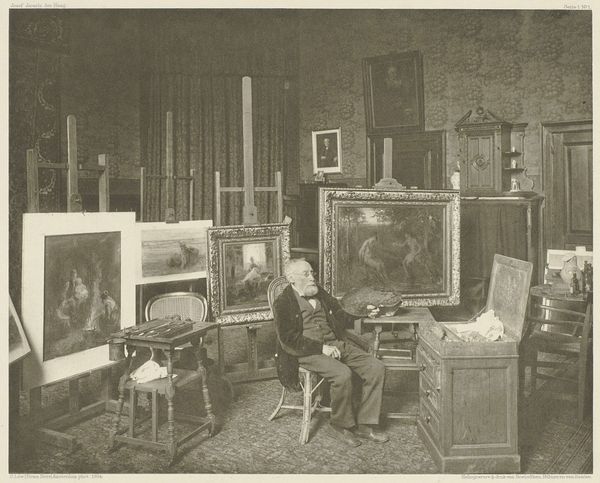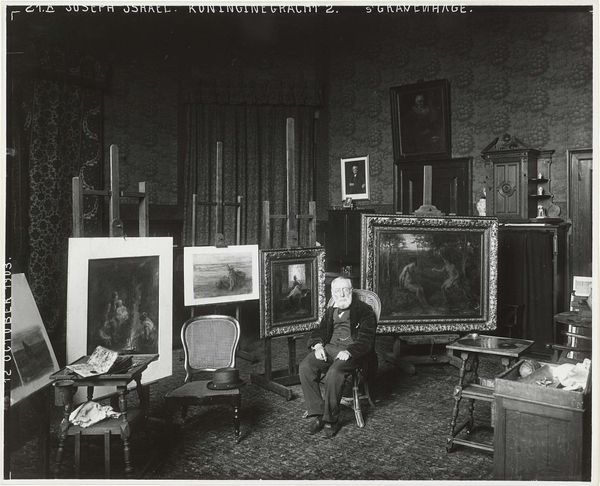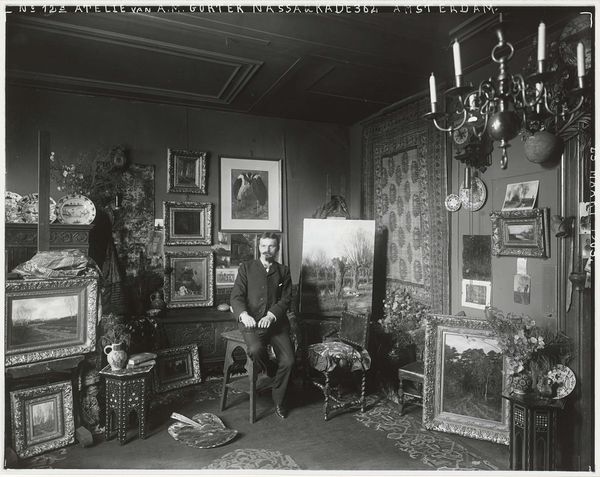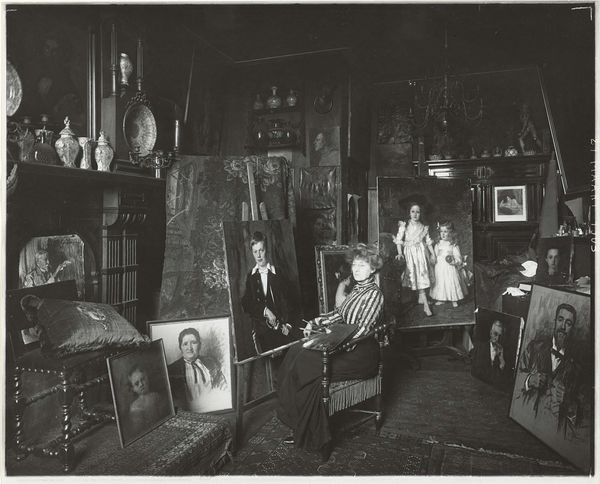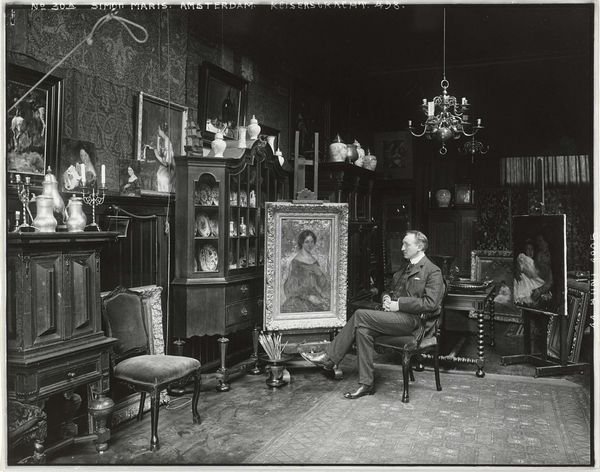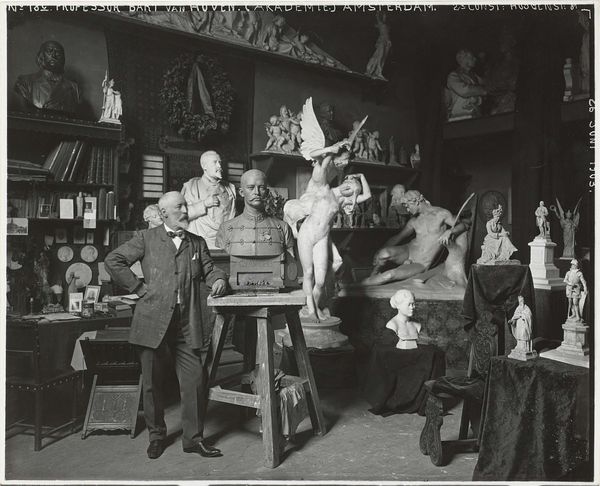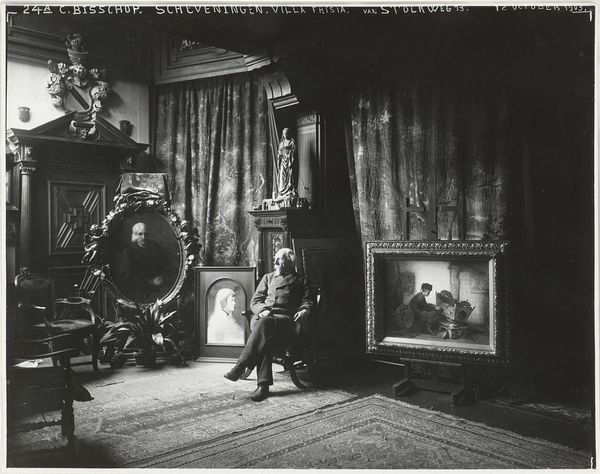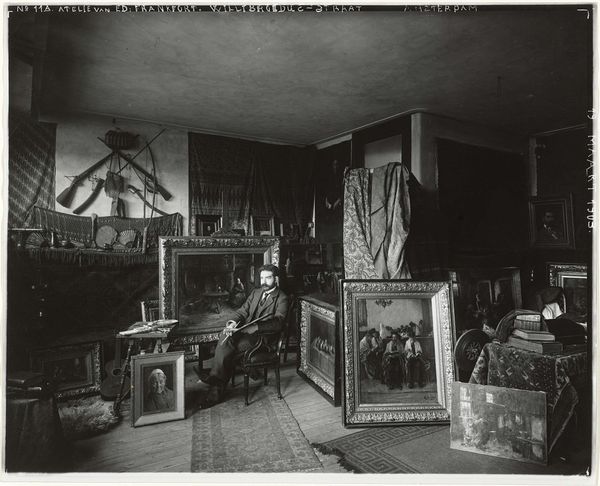
Schilder Hobbe Smith met een model in zijn atelier aan het Sarphatipark 42, Amsterdam Possibly 1903 - 1928
0:00
0:00
Dimensions: height 240 mm, width 300 mm
Copyright: Rijks Museum: Open Domain
Curator: This photograph, titled "Schilder Hobbe Smith met een model in zijn atelier aan het Sarphatipark 42, Amsterdam," likely taken between 1903 and 1928, offers a glimpse into the working life of an artist. What strikes you initially about the image? Editor: It's quite busy, isn’t it? There are so many paintings crammed into the space, creating an immersive scene of artistic production. What story can we extract about the life or process that took place there? Curator: Note how the photograph meticulously documents the contents of the studio: canvases in varying states of completion, frames stacked against walls, and props deliberately arranged to suggest a space of curated creative labour. What does it say about the commodification of artistic skill and taste during the time it was created? Editor: It seems like the space itself is almost staged. Even the model, dressed in what appears to be slightly exoticized clothing, seems posed as a prop. Does the image critique or celebrate artistic labor, given its obvious construction? Curator: Exactly. Consider the role photography played in shaping perceptions of artists and their working environments. It almost creates an artistic myth. The photograph displays evidence of process while reinforcing a particular image of the artist. What kind of consumer appetite fuelled such representations of labor? Editor: So, instead of romanticizing the artist, it’s about unpacking how this space, through its materials and their arrangement, reveals the relationship between art, labor, and how it’s sold? Curator: Precisely. By examining the means of production displayed here, the space itself becomes an exhibit about the art world's marketplace and material reality. The photo demystifies nothing - rather it adds to the constructed legend! Editor: That's fascinating. I never would have thought of a photo as showing how the artist manufactures this narrative by controlling the scene, but by using this approach it shows how even what appears personal may actually be deeply tied to market expectations.
Comments
No comments
Be the first to comment and join the conversation on the ultimate creative platform.
